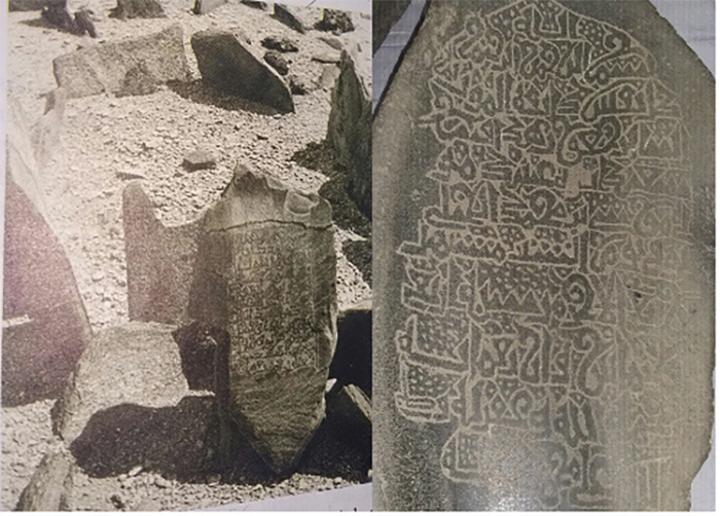Africa-Press – Eritrea. The very existence of writing systems in antiquity implies the sophistication of the cognitive map of early societies across the world. Written symbols, letterforms, and full-fledged alphabets, as well as scripts, have provided the most effective system devised by humans to describe the world around them in as much as allowing the administrative organization of complex societies and the transfer of their accumulated knowledge. Among the literate civilizations (communities with writing systems) of antiquity, pictographs, inscriptions, written records, and scribes represent the dearth of ancient writing traditions that evolved in the course of human history. Ancient literature in all its variety provides rich insights into the world of the great civilizations. The accurate and effective use of such evidence requires understanding of the social context and historical genesis of the use of writing in different societies in antiquity.
The antiquity of Eritrea represents the carving of inscriptions on monumental forms, particularly by the 1st millennium BCE. The position of the northern Horn at a nexus of major areas of the world has had significant consequences for the development of the region as an important and unique center for the origins of language groups and cultural exchange, among which the development of the writing system in the region becomes an important cultural transformation. The expansion of interregional culture contact and exchange seen during the 1st millennium BCE in Africa and the Red Sea area influenced the development of complex societies. Regional polities greatly expanded in the northern Horn and southern Red Sea area during this period, and the genesis of writing systems particularly in these regions was impacted by these events and processes. The development of writing systems in the northern Horn of Africa, thus, largely seems to have been associated with state development in the region.
With particular reference to the genesis of writing systems in the northern Horn, the dichotomy Sabean/Geéz has prevailed over centuries since the recording of inscriptions by epigraphers over much of the highland urban centers that flourished in Eritrea and northern Ethiopia by the 1st millennium BCE. In this respect, the origins and evolution of the Geéz writing system (an African script found in Eritrea and Ethiopia) have been strongly tied to the processes of interregional culture contact and exchange seen during the 1st millennium BC- 1st millennium CE in Africa and the Red Sea area.
Epigraphic and monumental evidence of South Arabian influence in the 1st millennium BCE suggests interactions between the human groups living in the Horn and the South Arabs, in particular, the Sabeans who dominated the highlands in Yemen in the 1st millennium BCE. Yet, the nature of the interaction is widely debated. Currently, the available archaeological evidence is very fragmentary. The evidence does not support any south Arabian migration and/or colonizations although it does not exclude the penetration into the highlands of small groups coming from different regions of Yemen, including Saba.
Scholars have long suggested the use of terms such as MKRB (mukarrib) and MLK (malik) and reference to Saba and South Arabian cultural features on inscriptions with ancient Sabaean script found from archaeological sites in Eritrea and northern Ethiopia implied the dominance of Sabaean influence. According to the current paradigms, the use of inscriptions in Sabaean script by 1st millennium BCE communities in the northern Horn of Africa was, however, limited to ways of describing elite political titles and religious references. There is a general absence of epigraphic information concerning administrative function, trade, accounting, or other essential aspects of the 1st millennium BCE communities in the northern Horn. Therefore, current scholarship pinpoints that writing in a South Arabian-like script does not suggest a wide-scale adoption of a South Arabian language by these communities or the existence of Sabaean migration events, colonization, and Sabaean primacy.
At present, the archaeological evidence points a distinction between the elite who used South Arabian symbols of power and an indigenous people maintaining their local traditions. A South Arabian influence is evident in monumental architecture, inscriptions and small votive altars. The recording of sphinx in an Egyptian/Merotic style also implies that both South Arabian and African symbols merged into one religious system in the mid-1st millennium BCE. This evidence, therefore, may indicate that indigenous leaders in the northern Horn of Africa used foreign elements with a different origin to express ranks and power, and it can be said that the genesis of writing systems in the Horn as early as 700 BCE is attributed to the interplay of these processes of cognitive mapping. It is understood generally that the inclusion of such elements may have taken over the course of generations rather than attribution to a limited number of South Arabian colonization or migration events. The genesis of writing systems in the northern Horn of Africa is the result of the agency of the 1st millennium BCE and the incorporation of features from a diverse range of elements in the southern Red Sea cultural environment. The writing systems and their epigraphic recording represent the dynamism of cultural transformation in the 1st millennium BCE. The archaeological record from 1st millennium BCE- 1st millennium CE sites in Eritrea and northern Ethiopia, therefore, constitutes writing systems representing a South-Arabian-like a script, non-vocalized Geéz (Proto-Geez) elements, and a full-fledged Geéz writing system.
The Geéz writing system is one of the oldest working systems in the world. This African writing system has remained unchanged for 2000 years, owing to its adaptability and innovative method of organizing sounds. The writing system provides not only a system of grammar, but an interface to the ancient world of Africa, its philosophies, belief systems, and advanced early societies. It is generally agreed upon that the writing system achieved perfection by the fourth or fifth century. Ge’ez was kept, in practice, across a wide range of sacred and scholarly activities from the thirteenth through the seventeenth centuries, known as the “classical period” of the Geez literature. The genesis and evolution of this African writing system culminated in the production of texts and scribes constituted in parchments (Branas). Old parchments housed in historical monasteries of Eritrea keep the dearth of chronicles and narratives of particularly the medieval period. Similarly, as far as the evidence of writing systems and written records from Eritrea is concerned, the Dahlak islands store a rich heritage of classical Kuffic inscriptions (classical Arabic script). The islands saw the development of the Arabic writing system from the 8th to 12th centuries.
In conclusion, the richness of the archaeological and historical evidence for writing systems and written records in Eritrea bears testimony to one of the few indications of writing systems in the African continent. The variety of evidence begs a multi-disciplinary approach to tackle the origin, evolution, and development of the writing systems comprehensively and the preservation of these records for posterity is very important.
For More News And Analysis About Eritrea Follow Africa-Press







